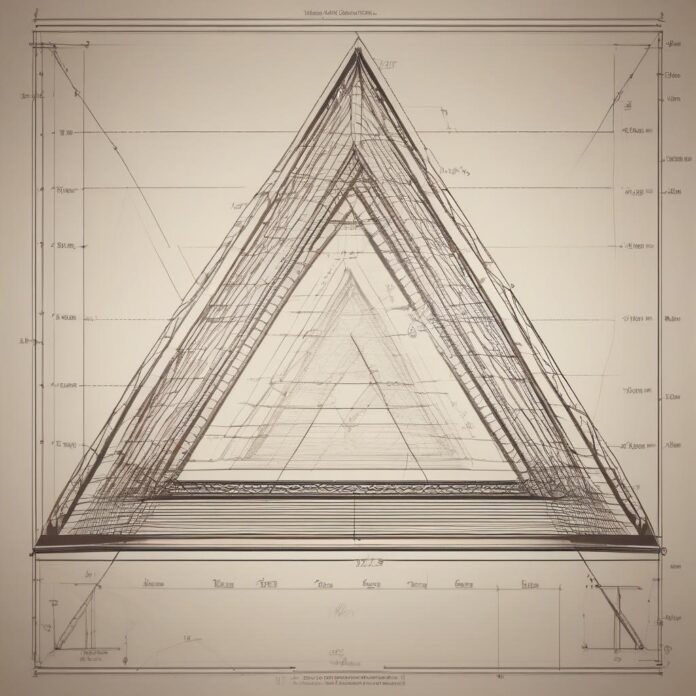-
Table of Contents
- The Orthocenter of a Triangle Formula: Explained and Illustrated
- What is the Orthocenter of a Triangle?
- Calculating the Orthocenter of a Triangle
- Orthocenter Formula:
- Practical Applications of the Orthocenter
- Architectural Design:
- Structural Engineering:
- Computer Graphics:
- Q&A
- Q1: Can the orthocenter be located outside the triangle?
- Q2: Can the orthocenter be located on the triangle?
- Q3: Can the orthocenter be located inside an equilateral triangle?
- Q4: Are there any special properties of the orthocenter?
Triangles are fundamental shapes in geometry, and understanding their properties is essential for various mathematical applications. One of the key concepts related to triangles is the orthocenter, which plays a significant role in triangle analysis and construction. In this article, we will explore the orthocenter of a triangle formula, its significance, and how it can be calculated. We will also provide examples and case studies to illustrate its practical applications.
What is the Orthocenter of a Triangle?
The orthocenter of a triangle is the point where the altitudes of the triangle intersect. An altitude is a line segment drawn from a vertex of the triangle perpendicular to the opposite side. Each triangle has its unique orthocenter, which can be inside, outside, or on the triangle itself.
The orthocenter is a crucial point in triangle analysis because it has several interesting properties. For example, the orthocenter is the center of the triangle’s nine-point circle, which passes through the midpoints of the triangle’s sides, the feet of the altitudes, and the midpoints of the segments joining the orthocenter to the vertices. Additionally, the orthocenter is the incenter of the triangle’s orthic triangle, which is formed by the feet of the altitudes.
Calculating the Orthocenter of a Triangle
To calculate the orthocenter of a triangle, we need to know the coordinates of its vertices. Let’s consider a triangle with vertices A(x1, y1), B(x2, y2), and C(x3, y3). We can use the following formula to find the orthocenter:
Orthocenter Formula:
x = (x1 * tan(A) + x2 * tan(B) + x3 * tan(C)) / (tan(A) + tan(B) + tan(C))
y = (y1 * tan(A) + y2 * tan(B) + y3 * tan(C)) / (tan(A) + tan(B) + tan(C))
Where A, B, and C are the angles of the triangle opposite to vertices A, B, and C, respectively. The tangent of an angle can be calculated using trigonometric functions.
Let’s consider an example to illustrate the calculation of the orthocenter. Suppose we have a triangle with vertices A(2, 4), B(6, 2), and C(8, 6). We can find the orthocenter using the formula mentioned above:
A = arctan((y2 – y3) / (x2 – x3)) = arctan((2 – 6) / (6 – 8)) = arctan(-2 / -2) = arctan(1) ≈ 45°
B = arctan((y3 – y1) / (x3 – x1)) = arctan((6 – 4) / (8 – 2)) = arctan(2 / 6) ≈ 18.43°
C = arctan((y1 – y2) / (x1 – x2)) = arctan((4 – 2) / (2 – 6)) = arctan(2 / -4) ≈ -26.57°
Now, we can substitute these values into the orthocenter formula:
x = (2 * tan(45°) + 6 * tan(18.43°) + 8 * tan(-26.57°)) / (tan(45°) + tan(18.43°) + tan(-26.57°))
y = (4 * tan(45°) + 2 * tan(18.43°) + 6 * tan(-26.57°)) / (tan(45°) + tan(18.43°) + tan(-26.57°))
After evaluating these equations, we find that the orthocenter of the triangle is approximately (5.33, 3.33).
Practical Applications of the Orthocenter
The orthocenter of a triangle has various practical applications in fields such as architecture, engineering, and computer graphics. Let’s explore a few examples:
Architectural Design:
In architectural design, the orthocenter can be used to determine the optimal placement of support columns in a triangular roof structure. By locating the orthocenter, architects can ensure that the weight distribution is balanced, minimizing stress on the structure.
Structural Engineering:
In structural engineering, the orthocenter can help determine the stability of a triangular truss system. By analyzing the forces acting on the truss members and locating the orthocenter, engineers can assess the load-bearing capacity and make necessary design modifications.
Computer Graphics:
In computer graphics, the orthocenter can be used to create realistic 3D models of objects. By calculating the orthocenter of a triangle representing a surface, graphics software can determine the direction of light sources and simulate realistic shading and shadows.
Q&A
Q1: Can the orthocenter be located outside the triangle?
A1: Yes, the orthocenter can be located outside the triangle. This occurs when the triangle is obtuse, meaning it has one angle greater than 90 degrees. In such cases, the orthocenter lies outside the triangle, forming an extended altitude.
Q2: Can the orthocenter be located on the triangle?
A2: Yes, the orthocenter can be located on the triangle. This happens when the triangle is right-angled, meaning it has one angle equal to 90 degrees. In this case, the orthocenter coincides with the vertex opposite the right angle.
Q3: Can the orthocenter be located inside an equilateral triangle?
A3: Yes, the orthocenter of an equilateral triangle is located inside the triangle. In an equilateral triangle, all three angles are equal to 60 degrees, and the orthocenter coincides with the centroid, circumcenter, and incenter.
Q4: Are there any special properties of the orthocenter?
A4: Yes, the orthocenter has several interesting properties. It is the center of the triangle’s nine-point circle, the incenter of the orthic triangle, and the intersection point of the altitudes. Additionally, the orthocenter lies on the Euler line, which connects the triangle’s circumcenter, centroid, and orthocenter.









